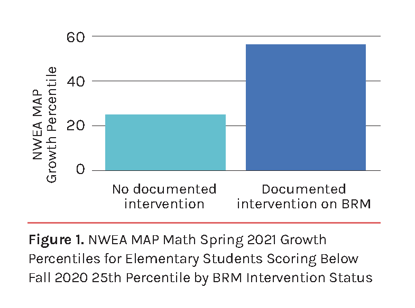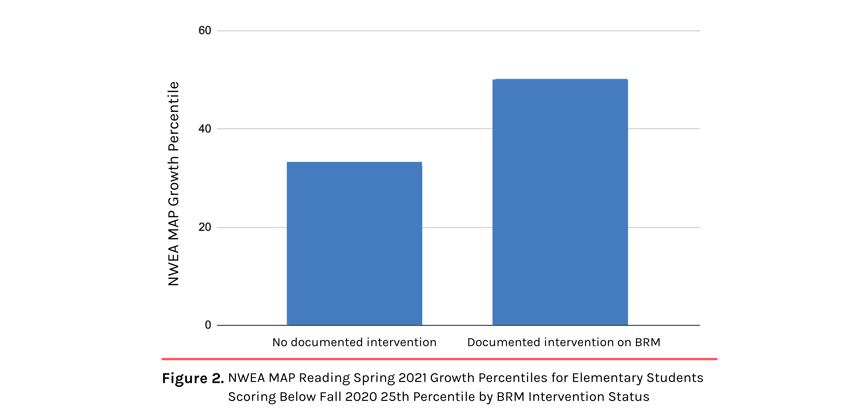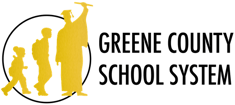Studying Success in MTSS Implementation and Academic Outcomes During the Pandemic Years: Four School District Case Studies
Following the beginning of the COVID-19 pandemic in 2020, schools faced several challenges as they dealt with the transition to remote learning as well as the trauma, increased isolation, and learning losses experienced by students. We identified four district partners who were eager to improve their Multi-Tiered System of Supports (MTSS) practice in order to better support their students during this difficult time. Our team was interested in understanding if districts were able to implement the core components of a successful MTSS practice during the pandemic years and if their use of the Branching Minds platform was associated with growth in student achievement.
The following case study highlights how Greene County School System leveraged the BRM platform to identify students needing additional support, use data to guide decision-making and problem-solving, and develop targeted intervention plans using evidence-based interventions and supports. The results also show significant gains in Reading and Math performance for students supported with intervention plans through the BRM platform. Below we discuss Greene County School System's successes and plans for further developing their MTSS practice. (The other case studies are linked below.)
|
|
Greene County School System, GA |
AT A GLANCE |
|
Introduction and Implementation
Greene County Schools partnered with Branching Minds (BRM) with the goal to make it easier for educators to collaboratively document and review student data as part of their Multi-Tiered System of Supports (MTSS) practice. The district also needed a platform that was aligned with their state guidelines and requirements around data tracking and the identification of students needing support. Greene planned to use the BRM platform to create intervention plans for math and reading as well as some plans for behavior. They adopted a strong professional development plan and had coaching workshops with BRM for their MTSS leadership team as well as classroom teachers. These sessions included a deep dive into creating high-quality goals and best practices for analyzing progress monitoring data for individuals and groups of students.
Across the 2020-2021 school year, the district saw the following implementation-based outcomes:
| 22% of all students had an active plan on BRM, including a goal, progress monitoring assessment, or intervention plan (MTSS best practice recommends at least 15% of students having an active plan) |
|
| Teachers had resolved 77% of all planned activities (goals, progress monitors, and interventions), indicating a high fidelity of implementation |
|
| 61% Elementary and middle schools had plans in place for the majority of their students identified as needing Tier 2 and 3 support |
|
| 88% of interventions and supports added to intervention plans were evidence-based |
Method and Results
Student performance was measured using the NWEA MAP assessments for both math and reading across the 2020-2021 school year (fall, winter, and spring testing windows). Branching Minds was implemented across all grade levels but interventions were assigned to students more frequently in elementary school. To both protect individual student privacy and control for sample size reduction, the analyses in this case study only included the performance of students in grades K-5.
 To determine the impact of BRM intervention planning on math outcomes, students’ NWEA MAP growth percentile scores at both the winter and spring testing windows were examined. Analyses included 124 elementary students who scored below the 25th percentile on the assessment at the beginning of the 2020 fall semester and who had subsequent scores at the winter and spring assessment windows. Students who were assigned an intervention over the course of the year saw no statistical difference in growth from fall to winter but did see significant growth from winter to spring. The 70 students who were assigned an intervention over the course of the school year saw an average 35-point increase in their growth percentile for the spring semester compared to those who had not been assigned an intervention (t(119.34) = -5.29, η2 = .02; See Figure 1).
To determine the impact of BRM intervention planning on math outcomes, students’ NWEA MAP growth percentile scores at both the winter and spring testing windows were examined. Analyses included 124 elementary students who scored below the 25th percentile on the assessment at the beginning of the 2020 fall semester and who had subsequent scores at the winter and spring assessment windows. Students who were assigned an intervention over the course of the year saw no statistical difference in growth from fall to winter but did see significant growth from winter to spring. The 70 students who were assigned an intervention over the course of the school year saw an average 35-point increase in their growth percentile for the spring semester compared to those who had not been assigned an intervention (t(119.34) = -5.29, η2 = .02; See Figure 1).
To determine the impact of BRM intervention planning on Reading outcomes, student growth scores for both the winter and spring were examined. Analyses included 122 elementary students who scored below the 25th percentile on the assessment at the beginning of the 2020 fall semester and who had subsequent scores at the winter and spring assessment windows. Students who were assigned a Reading intervention over the course of the year saw no significant increase in percentile growth at the winter testing window. The 75 students who were assigned an intervention over the course of the school year saw an average 17-point increase in their growth percentile for the spring semester compared to those who had not been assigned an intervention (t(120) = -2.67, η2 = .06; See Figure 2). Further analysis showed a significant interaction between grade and intervention status with students from third to fifth grade seeing a greater impact from BRM reading interventions than students from kindergarten to second grade (F(1,121) = 15.4, p < .01, η2 = .12).

Conclusion
The findings from this study show how students at Greene County Schools who were struggling at the beginning of the year in math and reading and had a documented intervention plan on BRM made significant gains in their academic performance by the end of the year. Greene also showed many indicators of strong platform adoption and implementation, as well as additional support from the BRM professional development to help improve their MTSS practice. The district has noted that BRM has provided visibility for administrators and school leaders into the work being done with students. As they continue implementing MTSS, the district hopes to develop and refine their approaches to helping students succeed and meet its goals while also meeting state and district requirements.
As educators, we have seen a lot of programs come and go. We have been part of different initiatives. I can honestly say, in my 23 years, this has been the best program that I have taken on in a district because it really does improve students learning.
— Trent Benjamin, Director of Elementary Teaching & Learning
Make MTSS Easy, Efficient, and Effective With the Branching Minds Web Platform
Transform your district's MTSS solution with personalized intervention plans, powerful collaboration tools, and easy-to-understand reporting. We are more than just a platform, we are a system-level partner.
|
|
|
|
School leaders report improved quality and consistency with the Branching Minds platform. |






